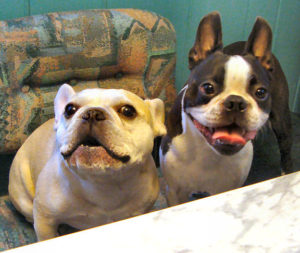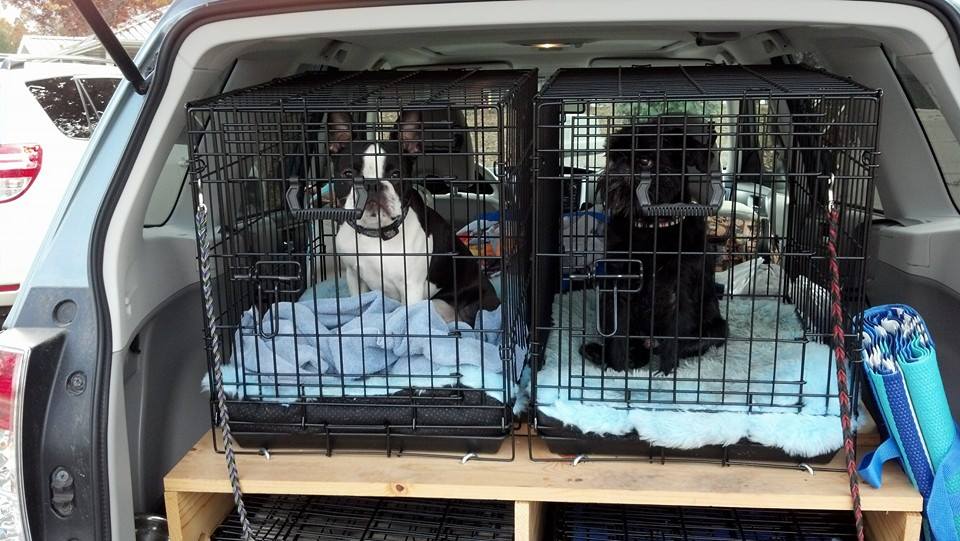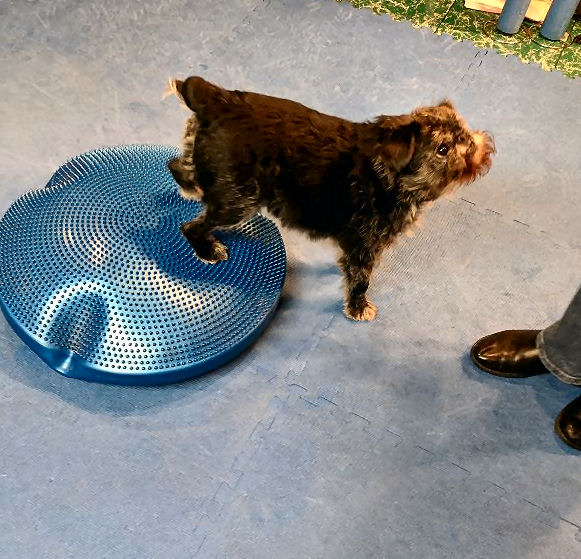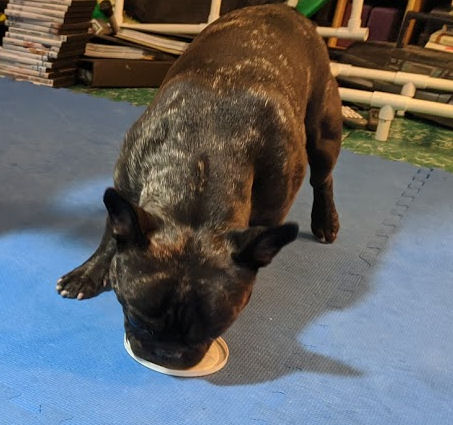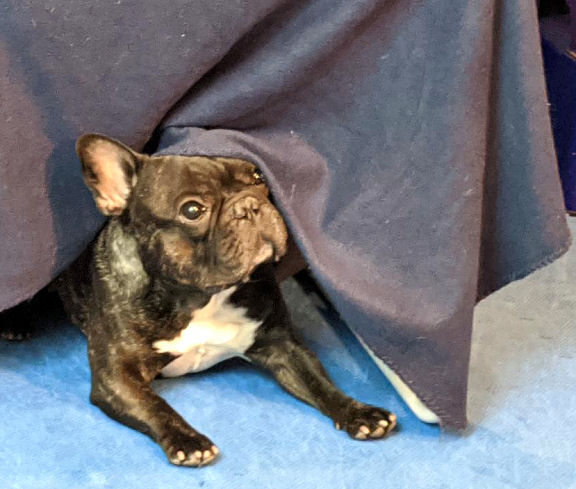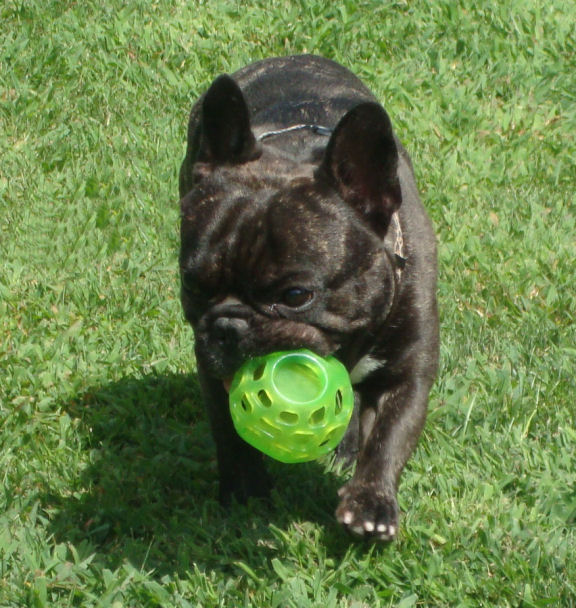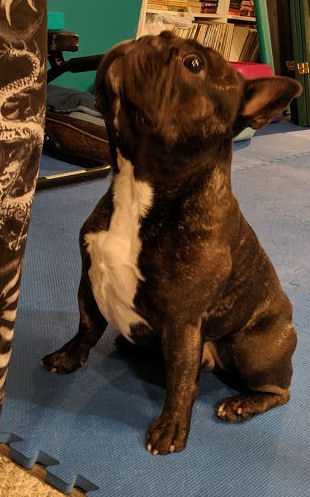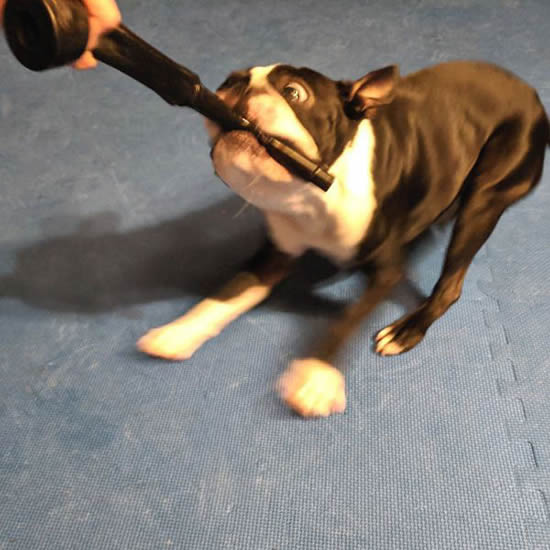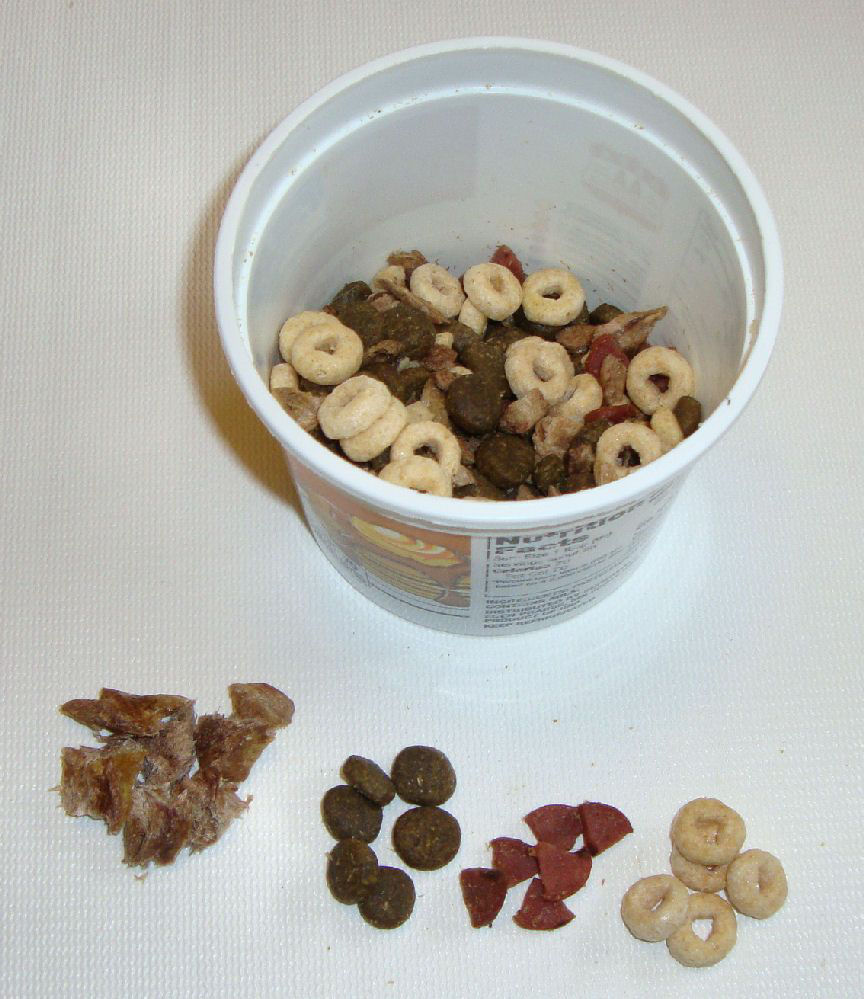There’s a saying in dog training “train the dog in front of you.” It’s good advice, as long as you see your dog. Like every person, every dog is unique. Our job, as our dog’s world interpreter, is to explain things how that dog needs.
Tango demonstrated it this week
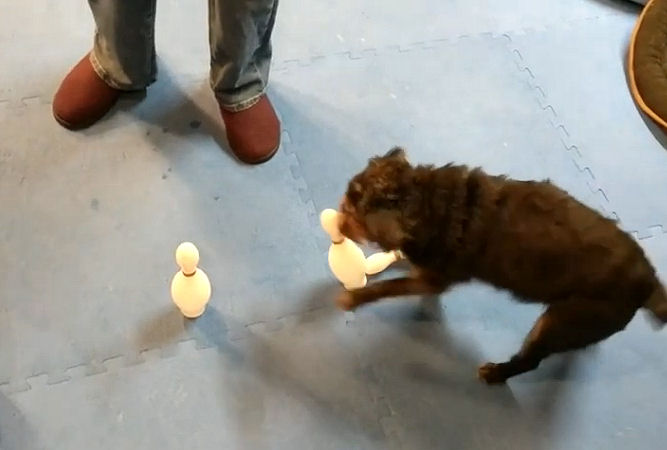
If you’ve been following along in our newsletter, you know that Tango, Fran’s 11-year-old Brussels Griffon has been learning how to “bowl” – knocking over toy bowling pins. Tango loves playing training games, but he’s not the fastest to catch onto things. Fran’s learned over the years that he does eventually get it – as long as it’s explained in bits he understands.
Last week he showed us that he doesn’t understand when the pin layout is staggered. He was okay as long as they were in a straight line, but the small difference was too great a leap for him.
Booker (Fran’s Boston) and Torque (Hope’s French Bulldog) had no problem generalizing from a straight line to a staggered one. But Tango does. Fran has to train Tango where he is.
No comparing to others
Saying (or thinking) “But So-And-So got it right away! Why doesn’t Whatsit understand?” isn’t helpful. Whatsit is a different dog than So-And-So and needs to be taught differently. Even if they’re the same breed. Even if they’re siblings.
Fran and Hope are sisters. They sport a distinct family resemblance and have often been mistaken for one another. But they’re very different people. Hope learns by listening, Fran is a visual learner.
It’s up to you to see your dog and figure out how best to manage the steps of teaching your dog any new behavior – whether it’s a fun trick, not pulling on leash, or greeting guests politely.
Seeing your dog
Dogs always do what’s most rewarding for them. And it could be anything – from food, to toys, to attention from you. Playing training games with you should be the most rewarding of all – they get both your attention and a physical reward as well.
If your dog is loving the games, but just not understanding what you’re teaching, it’s up to you to adapt to the dog in front of you. See your dog. Figure out what works and what’s baffling. Go back to where your dog was successful and take smaller steps forward. (Read more about setting your dog up for success.)
Next time, Tango’s bowling pins will start in a straight line. One in the middle will move slightly for each repetition. When that one is no longer a problem, another one will move slightly each time. Because that’s how Tango has shown us he needs to learn. We want to keep challenging him, with a goal we know he can reach.
Click here to see Tango’s latest bowling session (YouTube will open in a new tab.)
Your dog will show you who he/she is. See your actual dog. And train the dog in front of you.

